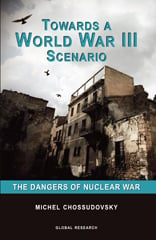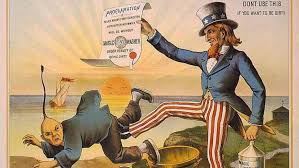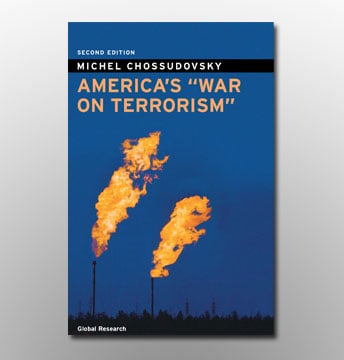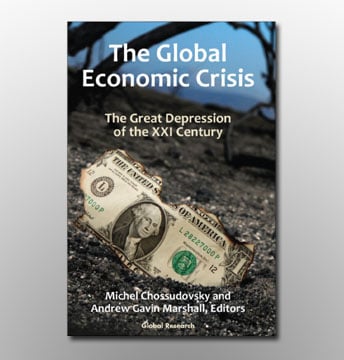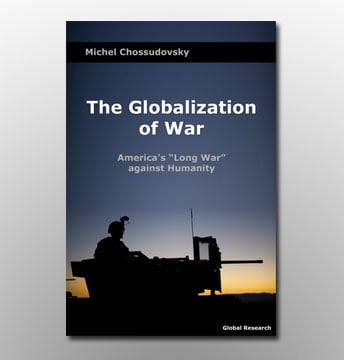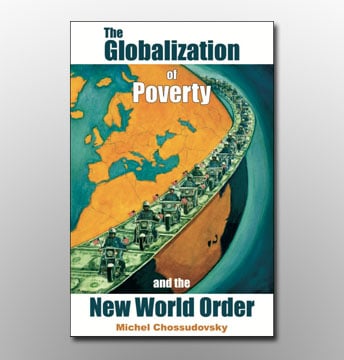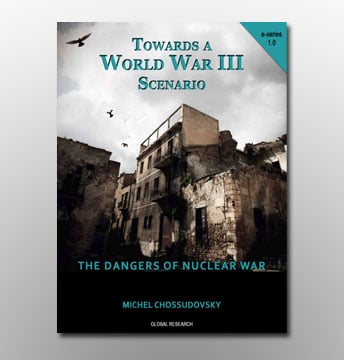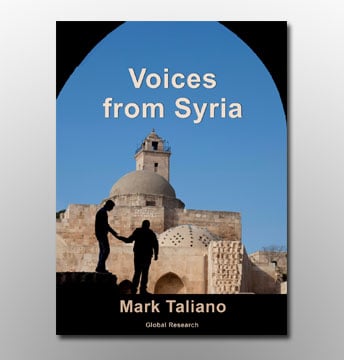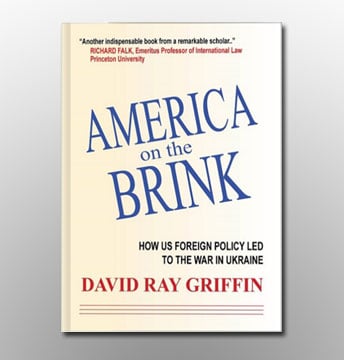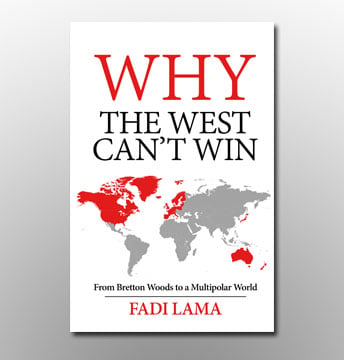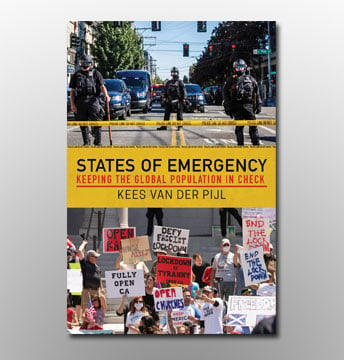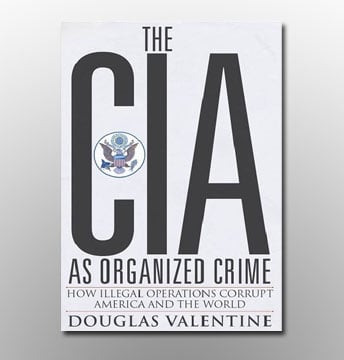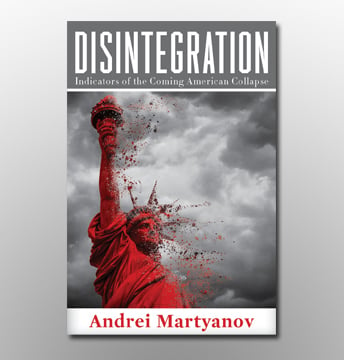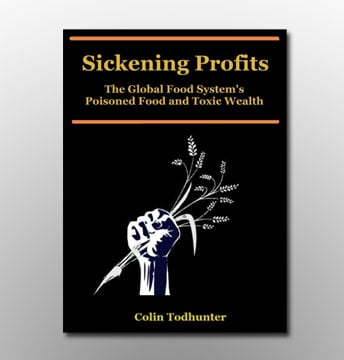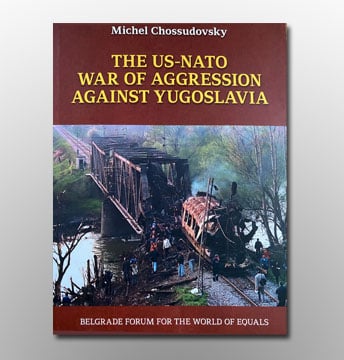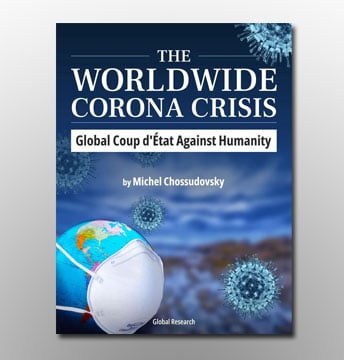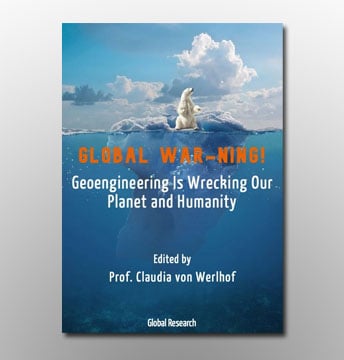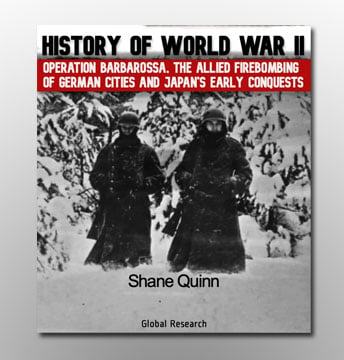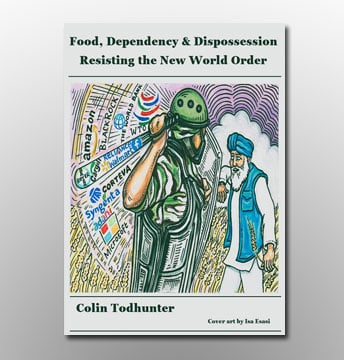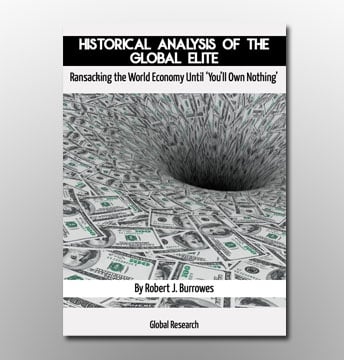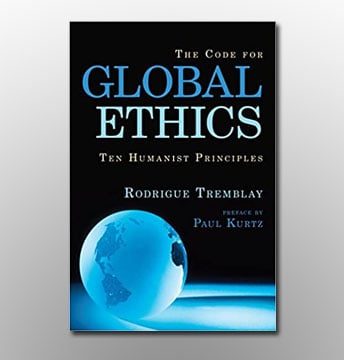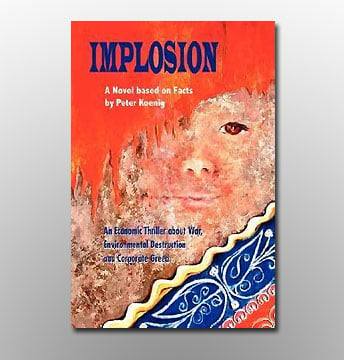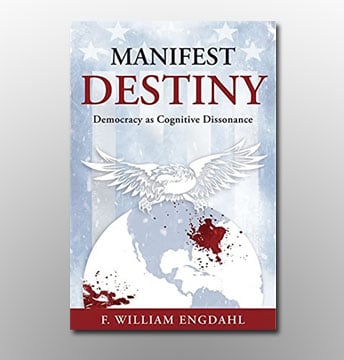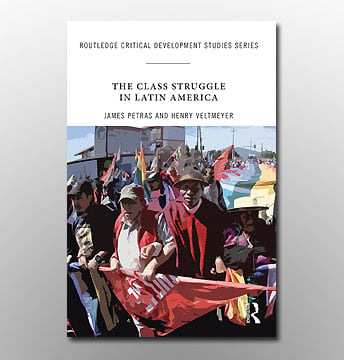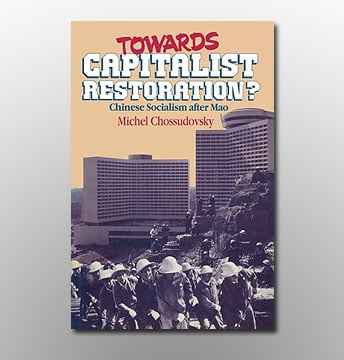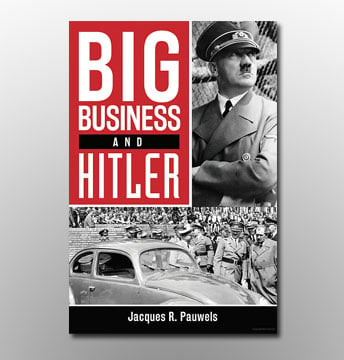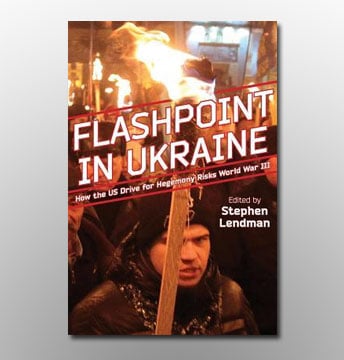Like the many industrial disasters that have marked the history of modern and contemporary Japan, the nuclear disaster of March 2011 resulted in much litigation. By the ninth anniversary of the catastrophe in 2020, nearly four hundred individual civil actions, and at least thirty known cases of collective civil actions, along with two collective administrative lawsuits, have been launched across the country. The total number of plaintiffs exceeds twelve thousand. Thirteen district courts have already handed down judgments, a large majority of them in favor of the plaintiffs against the Tokyo Electric Power Company (Tepco) and the Japanese state. The cases are now pending in appeal.
There has been no shortage of literature devoted to the politics of disaster redress since Fukushima, from such perspectives as political science, sociology, and scientific studies (e.g. Hasegawa 2011, Fujigaki et al 2015, Kimura 2016, Mullins, Nakano et al 2016, and Aldrich 2019, Polleri 2019). But despite interest in the various social mobilizations that arose in the aftermath of the disaster, thus far, with the exception of newspaper articles, there has been very little analysis of the collective civil actions seeking compensation or of related fundamental issues.
In addition to these civil actions (minji soshō), a group of 15,000 Fukushima citizens sought criminal prosecution of the state and Tepco for the nuclear disaster as early as 2012. The prosecutors reduced the number of defendants from twenty to three, all top Tepco executives. In its September 2019 verdict, the Tokyo District Court concluded that there was insufficient evidence to convict them. The case is now pending on appeal with little chance of a reversed verdict. In a recent Asia-Pacific Journal article on the case and one of the rare in-depth analyses of such lawsuits, Johnson, Fukurai and Hirayama (2020) concluded: “The trial and the criminal processes that preceded it revealed many facts that are proving useful to plaintiffs in their ongoing civil lawsuits with Tepco and the Japanese government.”
This essay endorses this conclusion and provides an overview of the civil action lawsuits. The civil cases have made it possible to mobilize Fukushima victims to pose critical questions about the role of the state in the decisions that provoked the nuclear disaster as well as to challenge subsequent state policies. Following existing scholarship on the Fukushima nuclear disaster and the literature on Japanese law and society, I draw on interviews with representatives of plaintiffs’ groups and first-hand documents they provided. I highlight the difficulties in the process of litigation, and emphasize that despite the low amounts of compensation, the Fukushima lawsuits are significant for contemporary Japan, as well as for other lawsuits over industrial and techno-scientific damage elsewhere. I show that these legal initiatives build on a legacy of collective lawsuits that have developed in Japan over the last 50 years. The next two sections introduce important points about the legal and political contexts.

Plaintiffs meeting after a court meeting (at Osaka City Central Public Hall), 23 May 2019. Courtesy of Akiko Morimatsu
1. The Legal Context
For a long time, discussion in the English-language literature on litigations in Japan has focused on the relatively low rate of legal battles (in particular compared to the U.S.), and cultural or institutional barriers as the main possible causes for this. In a seminal essay, Japanese legal sociologist Kawashima Takeyoshi (1963) posited that rather than judicial decisions based on universal standards, Japanese people had a cultural preference for informal mechanisms of dispute resolution. Kawashima nevertheless expected that Japanese society would become more litigious as modernization progressed. The question of modernity aside, this prophecy proved true as the rate of litigation significantly increased, especially in the 1990s.
Previously, many Japanese academics had drawn on Kawashima’s culturalist argument, without attending to his view that litigation was likely to increase with modernization. The result was a legal version of the Nihonjinron thesis on the Japanese, i.e., an emphasis on culturally homogenous Japanese valuing consensus and harmony, hence a propensity to eschew litigation. This fantasy was broken by Frank Upham’s groundbreaking article on the four big pollution lawsuits (1976; see also Upham 1987, 2005), and John Haley’s essay, “The myth of the reluctant litigant” (1978), which analyzed statistics that included the evolution from late Meiji to the mid-1970s shifts in the number of judges, public procurators and private attorneys, as well as the percentage of successful applicants to the national law examination. Haley’s article has often been taken to show that access to Japanese courts was consciously restricted in a variety of ways, such as keeping the number of legal professionals low (see also Haley 1982, 1991).
However, this claim of low access to the judiciary is no longer relevant. Ginsburg and Hoetker (2006) have shown that, thanks to an expansion in the Japanese bar and more streamlined procedures for accessing the judiciary and launching a suit, from 1986 to 2001 civil litigation increased by approximately one third, although most of that increase was concentrated in urban prefectures, particularly Tokyo. Foote (2014: 174-180) further shows that several important reforms have improved the legal environment for those seeking redress. First, the amendments to the Code of Civil Procedure in 1996 and the Information Disclosure Act (enacted in 1999) have expanded civil access to government information, which is crucial for social movements. Second, the Justice System Reform Council, which was launched in 1999, initiated a reshuffle of the entire judiciary. The changes included greater flexibility and quicker procedures for cases involving many victims, as well as new provisions of legal assistance, and various efforts to increase both the size and quality of the legal profession.
As a result of these reforms, the number of judges and prosecutors increased from, respectively, 2,143 and 1,363 in 1999, to 2,774 and 1,976 in 2019, while the number of lawyers jumped from 16,731 to 41,118 (Nichibenren 2019). The number of lawyers did not reach the target of 50,000 by 2018, as announced in the final report that the Justice System Reform Council released in 2001 (Ginsburg and Hoetker: 38). But it is worth noting that in the meantime, the female to male ratio has more than doubled for lawyers (from 8.4 to 18.8%) and prosecutors (from 8.4 to 25%), with women making up 26.7% of all judges (ratio not given for 1999). These changes contrast sharply with the persistent glass ceilings that women continue to face in other professions.2
Consequently, if we follow Foote (2014: 180), we can assume that although the reforms remain incomplete, and they do not guarantee success in litigation, they have facilitated access to the judiciary and the work of Japanese “cause lawyers.”3 The following sections will explore the relevance of these developments to the civil actions launched by the victims of the Fukushima nuclear disaster.
2. The Political Context of Lawsuits
The independence of the Japanese judiciary has been the subject of a long and heated debate, especially when compared to its American counterpart (Haley 1998, Johnson 2002, Johnson 2002, Upham 2005, Ramseyer and Rasmusen 2003). A discussion of the topic goes beyond the scope of this article. Suffice it to say, for the problem at issue here, the Fukushima litigations necessarily have political implications, even though they may not be explicitly stated in the lawsuits’ objectives. Unlike former Prime Ministers Kan Naoto and Koizumi Jun’ichirō, who have become staunch opponents of nuclear energy, Prime Minister Abe Shinzō has expressed a desire to restart as many nuclear power plants as possible. Regardless of what electricity generation will look like in the future, Japan will have to deal with the legacy of the Fukushima Daiichi meltdown. According to the government, it will take at least another thirty or forty years to repair the entire site (Keizai sangyōshō 2019), or up to 200 years according to other estimates (Perry 2015). Robots have been used to inspect the damaged reactors, but the extremely high radiation levels have rendered them useless for cleanup operations (McCurry 2017).
The 2020 Olympic Games—now postponed due to COVID-19—have been presented to the Fukushima region as an opportunity to restore national confidence and revive economic growth. The aura of positivism associated with the Olympic Games casts a modest veil over the tremendous tasks to be accomplished at Fukushima Daiichi for the next 40 years at the very least (Jobin 2019). Meanwhile, Fukushima Daiichi and its surroundings have become a huge storage area for radioactive waste. National government spokespersons understate the risk of irradiation in the Fukushima region and subsequent impacts on Japan’s food supply (Kimura 2016). A basic problem is that under the neoliberal premise of self-responsibility (jiko sekinin), the burden of recovery tends to be placed on the victims themselves or on the most vulnerable, who are forced to show their “resilience” (Scoccimaro 2016, Ribault 2019, Asanuma-Brice 2020, Polleri 2019, Topçu 2019, Kojima forthcoming).
A central issue in Fukushima civil actions is the displacement caused by the nuclear disaster and the persistent radiation background. According to state data, such as those published by the Japan Reconstruction Agency, the nuclear disaster itself caused the evacuation of about 164,000 people from the evacuation zones and adjacent areas, including mandatory and voluntary evacuation, before gradually decreasing to about 79,000 people (Xuan Bien Do 2019). At the end of March 2017, the government cut public aid to 27,000 people displaced by the disaster; although the government would like to pretend that everything is back to normal, only ten per cent of evacuees have returned to their abandoned homes, the majority of them being over 60 years old (Pataud-Célerier 2019).
On 11 March 2020, nine years after the nuclear disaster, the front page of the Asahi Shimbun deplored the lack of interest in the issue, even among the inhabitants of Fukushima themselves (Kikuchi 2020). In one photo showing rescue workers paying tribute to their colleagues who died in the 2011 earthquake, they are wearing masks, not to prevent radiation, but COVID-19.
Through the Alternative Dispute Resolution (ADR) launched by the state, victims can seek compensation for damages that Tepco does not recognize (Kojima 2017). The goal for Tepco and the state is to reduce the number of legal battles. But this system has not eliminated frustration. While the total number of plaintiffs is a tiny fraction of all whose lives have been disrupted by the disaster, their action is nevertheless a thorn in Abe’s side. The head of another plaintiffs’ group explains that the fear of being relegated to the ranks of “abandoned people” (kimin) has served as motivation to sue the state and Tepco (Maeda Akira, in Maeda et al. 2019: 63). One of our interviewees adds:
“Prime Minister Abe and his government have sent many signals that his ultimate goal is to eliminate the number of official victims of the nuclear disaster before 2020. We are a burden and a stain on the landscape of the Olympics.”4
In the eyes of leaders of the citizen that initiated the criminal lawsuit, as well as for all of the plaintiffs involved in the collective civil actions, the September 2019 verdict was enormously unjust and influenced by the political context (Johnson et al. 2020). Many had hoped that punishment would send a strong signal to Abe’s pro-nuclear government. Accordingly, although there will likely be a protracted multi-year battle to the Supreme Court, the nationwide collective civil lawsuits can be understood as a means to secure redress and to halt the pace of nuclear restarts.
3. Plaintiffs’ Mobiles and Court Decisions
All of the plaintiffs for the collective civil actions seek compensation either from Tepco (4 cases), or from both Tepco and the state (27 cases), specifically for material damages, such as the loss of a home or business, and related consequences, such as psychological distress. Table 1 in Notes presents an overview of the cases.
As of 30 March 2020, thirteen judgments had been handed down. The judges found Tepco liable in twelve cases, while in eight cases, both Tepco and the state were found liable and ordered to pay compensation to the plaintiffs. There was only one case (Yamagata, 17 December 2019) in which the judges dismissed the claims against Tepco and the state. This was a blow to the nationwide movement. Yet, the battle goes on in appeal.
The time between filing complaints and reaching judgments is four to six years. Although this may seem long, it is approximately the national average for this kind of case. However, eighteen other cases are still pending at the district level. Despite the precarious condition of the people displaced by the Fukushima nuclear disaster, the courts do not accelerate the process. Furthermore, Tepco and the state have appealed all of the judgments against them. In light of precedent cases, such as the collective lawsuits for victims of the atomic bomb, the Minamata disease or asbestos, the Fukushima-related lawsuits will probably continue over several years, if not one or more decades.
There are two main categories of lawsuits: one focuses on the restoration of a safe—radiation-free—living environment in Fukushima; the other stresses the right to start a new life elsewhere, assuming that it will probably be decades until the danger of radiation is eliminated. In the first type of lawsuit, the plaintiffs have declared the goal of safe return to their lost land, as summed up in slogans such as “Give our previous lives back!” (moto no seikatsu o kaese; Table 1.3), “Give our source of work back, give our region back” (nariwai o kaese, chiiki o kaese, alternatively, “Back to normal!” genjō kaifuku, Table 1.4 and 1.9), “Living in Odaka!” (1.26) and “Give our hometown Tsushima back” (1.28). These cases have 6,489 plaintiffs, over half the total number of plaintiffs in the nationwide coalition. The remaining 5,920 plaintiffs in 26 cases launched by displaced people all over the country, from Hokkaidō to Kyūshū, claim financial support to seek refuge away from radiation (hinan no kenri), regardless of the government’s claims of safety.5
Despite these different perspectives—eliminating radiation in Fukushima or pursuing the right to live elsewhere—the collective civil actions share common goals. Attorney Kurozawa Tomohiro, head of the plaintiffs’ group in the Kanagawa lawsuit (Table 1.16 and Table 2.8), emphasizes three main motivations (Maeda et al. 2019: 7-24). The first is to prove Tepco and the state’s responsibility given the appalling lack of preventive measures against earthquake and tsunami, which were the causes of the nuclear disaster. Evidence for this argument, which was presented in the criminal lawsuit, has been central to several civil actions. The second goal is to challenge the compensation criteria set by the state and Tepco for the people displaced by the disaster. The third goal is to challenge the standards of radiation protection that the state has used thus far to define territories at risk. The last two goals are specific to the civil actions.
Relevant to compensation standards is the fact that all of the plaintiffs were driven from their homes by the disaster, a situation that identifies them as refugees (hinansha) under international standards. Although the plaintiffs include forced evacuees (kyōsei hinansha), the state has classified the majority as “voluntary evacuees” (jishu hinansha). The Japanese government distinguishes between those who lived in the evacuation zones, and those who lived outside the zones. The government classifies departures of house outside the evacuation zones as “voluntary,” as if their departures were a matter of personal convenience, regardless of the increased risk of radioactive exposure (Kojima 2017). Consequently, many people have been excluded from the compensation plan launched by Tepco and the state; only children, pregnant women and a few other exceptions have been eligible to apply for small amounts of compensation in the case of those who lived outside the evacuation zones. Furthermore, this compensation plan ended in March 2017, leaving many people in difficult economic straits. Judges continue to use the compensation plan’s standards as their point of reference (Table 2 in Notes).
Crucial in the debates are assessments of the consequences of “low doses” of radiation exposure. The Linear No-Threshold (LNT) model posits the lack of a safety threshold below 100 millisieverts (mSv) or even below 20 mSv; this model is now backed by a strong consensus in the international scientific community, as well as among experts in Japan. But turning these assessments into legal standards for public health is another story. Japanese official judgment remains that the policy target for the annual maximum exposure is 1 mSv. In practice, the post-311 Japanese state has used 20 mSv as the safety threshold for radiation exposure and disregarded evidence of the consequences of the higher threshold (Jobin 2013b, Shirai 2015, Hirakawa 2015, Kimura 2016, Ribault 2019). According to physician Sakiyama Hisako, who has testified in three lawsuits at the plaintiffs’ request (Chiba, Kyoto, Tokyo), the experts backing Tepco and the state cannot argue against the LNT’s conclusions, but they have nevertheless tried to mitigate the consequences of those conclusions, as if the risks between 1 and 20 mSv were negligible, effectively ignoring a large body of recent epidemiological surveys showing evidence to the contrary: that exposure to dosages between 1 and 20 mSv led to increased risk of cancer and DNA damage (Sakiyama in Maeda et al 2019: 41-56, see also Leuraut et al. 2015, Richardson et al. 2015). In addition to the civil actions, two collective administrative lawsuits have also been launched against the state, focusing on the problem of radiation standards (in Table 1, cases 31 and 32). By contesting the safety threshold of 20 mSv, these lawsuits all call into question the territorial zoning set in the wake of the disaster and thereafter gradually reduced, making fewer people eligible for compensation.
4. Small Compensation
Thus far, with the exception of a recent verdict in Yamagata (December 2019), the courts have ruled against Tepco in twelve cases, with the state being found liable in eight cases. For a social movement, this is an impressive result. However, when it comes to compensation, the disappointment runs deep. Let us look at some examples.
One of the first court decisions was handed down in February 2016, and it was not for a collective case, but involved a family that had left Koriyama City (Fukushima Prefecture). Although Koriyama is located outside the official evacuation zone, the court took into account the fact that its inhabitants were exposed to a level of background radiation exceeding official safety standards. Since the mother had been pregnant and the family already had a young child, they decided to move to Kyoto. The father, who was in his forties, had been running a restaurant in Koriyama, and tried to start a new business in Kyoto, but faced with difficulties, he fell into depression. He then sued Tepco for post-traumatic stress disorder, and the Kyoto District Court ordered the company to pay him 30 million yen (about US$269,000) in compensation.6Although this amount is probably far from sufficient to compensate his loss, it was a relatively large settlement compared to the amounts granted in the collective cases (see Table 2). For instance, two years later, when the same Kyoto court ruled that Tepco and the state owed compensation to a group of 110 plaintiffs or 58 households, including 2 households of forced evacuees and 49 households of voluntary evacuees (Table 1.17, and Table 2.6), the amounts were considerably lower: 600,000 yen for children of voluntary evacuees, and 300,000 yen for the adults (respectively US$5,400 and US$2,690).
The first decision in a collective suit came in March 2017 from the Maebashi District Court (Kikuchi 2017; see Tables 1.12, 2.1). The plaintiffs included both forced and voluntary refugees, most of whom had left homes located less than 30 kilometers from Fukushima Daiichi (Soeda 2017: 101; and documents provided by Gensoren). This court was the first to recognize the responsibility of both the company and the state. After reviewing expert testimony and conducting on-site inspections, the judges ruled that Tepco and the state authorities had, as far back as 2002, been clearly aware of the risk that the nuclear reactors’ cooling system could be destroyed by a large tsunami. This was an important decision that has since set a crucial precedent (Soeda 2017: 110-118). Even so, the plaintiffs were dismayed by the low amounts of compensation set by the judges. The families who had fled from official evacuation zones were to receive up to a maximum of 5 million yen, about US$45,000, unless they had already received the baseline payment of 1.8 million yen from the state and Tepco’s compensation plan, in which case they would receive a premium of less than 3.2 million yen (about US$34,000). Obviously, these amounts were a small fraction of the damages people had suffered as a result of the loss of their home and livelihood.
A few months later, in September 2017, the Chiba District Court ordered Tepco to pay compensation in a similar range (Tables 1.7, 2.2). Moreover, the judges did not deem the state responsible. The third decision, in October 2017, was for the largest group of plaintiffs (nariwai o kaese, Tables 1.4, 2.3), and reaffirmed both Tepco and the state’s responsibility, but rejected the claims of one fourth of the plaintiffs and delivered insultingly low compensation premiums to the rest (between US$270 and 1,800). In March 2018, a Tokyo court delivered a relatively higher level of compensation for voluntary evacuees (Tables 1.5, 2.5), and this verdict was the only one to explicitly endorse the LNT model of radiation risk.
Even more than a strictly economic measure of the damage, the plaintiffs oppose a strictly economic measure of the value of their homeland. This is especially explicit in the testimonies of those involved in lawsuits with slogans such as “Give us back our hometown” (Nariwai o kaese… bengodan 2014). As Laura Centemeri (2015) explains, in many issues of environmental justice around the world, the environment is often perceived as such a constitutive part of a person and his/her community, that if it is affected by massive industrial pollution, compensation for “a loss of enjoyment” of the area does not mean much for the victim and his/her affected community. The loss resists general valuation because “things and persons are constituted as unique spatio-temporal particulars” (Centemeri 2015: 314).
In the Fukushima lawsuits, the plaintiffs express this sentiment as the “loss of homeland” (furusato no sōshitsu), i.e. the disappearance of one’s place in life, its common history and specific culture. As Yokemoto Masafumi, an expert summoned to the Iwaki branch of the Fukushima court, has pointed out, the “loss of homeland” is something unprecedented in the history of Japan (Soeda 2017: 119-122, see also Yokemoto 2016). The plaintiffs’ lawyers therefore advanced a broader understanding of the nuclear disaster’s consequences, which are difficult to convert into money. However, the amounts eventually set by the judges are so small, especially for those who lived outside the official high-risk zones, that they cannot provide any moral comfort (Maeda et al 2019: 13-19, 67-69). Moreover, Fassert and Hasegawa (2019: 115) observed: “gap in compensation payment, which is in reality the financial assistance for evacuation, has triggered jealousy, tension and division among the affected residents, leaving profound scars in the communities.”
In the large majority of these collective actions plaintiffs have sued both Tepco and the state. The latter carries special meaning. Research on the Japanese judiciary shows that judges constitute a portion of a state bureaucracy with strong discipline and esprit de corps, which enables them to maintain some distance from the government and the Liberal Democratic Party (LDP). They are nevertheless deeply influenced by the dominant political culture (Upham 2005: 454, cf. Haley 1998, Johnson 2002, Ramseyer and Rasmusen 2003). Based on these findings, we can posit that the decision to sue both Tepco and the state might have prevented the judges from setting higher levels of compensation. But as the lawyers have argued, the state had a fundamental responsibility in developing a nuclear program in a highly seismic country, so there was no question of not suing the state (Kawai 2012, and Att. Nakano Tomoki in Nariwai o kaese… bengodan 2014: 50-64).
5. The Criminal Suit: A Driving Force?
The collective lawsuits’ stance on this issue shares similarities with that of the criminal lawsuit. As Frank Upham has pointed out (1976), in collective lawsuits, such as industrial pollution litigation, plaintiffs and their lawyers cannot restrict themselves to a strict calculation of the value of material or human damage; they aspire to an ethical judgment that has political consequences, if only to prevent similar tragedies. In civil actions, the defendant’s fault must nevertheless be converted into money, which in some cases, have a tendency to attenuate the ethical dimensions of the charge (Jobin 2013a). Criminal lawsuits offer a means of counterbalancing such outcomes.
However, criminal lawsuits against those responsible for industrial disasters are extremely rare, not only in Japan, but worldwide. The most spectacular case was in Italy, with a lawsuit involving more than six thousand plaintiffs against the two presidents of the asbestos company Eternit; after convictions from the district and appeal courts of Turin, the case was dismissed by the Supreme Court of Cassation in Rome (Marichalar 2019). In France, similar proceedings initiated by asbestos victims have been dragging on for years. In Japan, the 1988 conviction of two Chisso company executives for their responsibility in the 1960s Minamata disease epidemic was, for the victims, too little, too late (Togashi 1995, Jobin 2014).
In this national and global context, the criminal lawsuit backed by over a group of 15,000 Fukushima residents, usually known as Gensodan,7 is exceptional. The core members behind the lawsuit’s early momentum are a team of fifty citizens who, since the mid-1980s, have been fighting against the conspicuous presence of nuclear power plants in Fukushima. When the nuclear disaster occurred in March 2011, they were planning a protest against the ten-year extension of Fukushima Daiichi’s nuclear reactor.8
The criminal lawsuit has been, legally speaking, far more demanding than a civil action, so it is not surprising that it took more than five years before the first hearing was set in July 2017 (Johnson et al 2020). However, for the Gensodan, the slowness of the criminal proceedings and the many obstacles throughout the entire process are the product of obvious political influence. Not only was the case abruptly transferred from the jurisdiction of Fukushima to Tokyo, but also, once the hearings began, the judges exhibited a hostile attitude toward the plaintiffs who attended the hearings:
“The controls were stricter than those for the trial of Aum Shinrikyo, as if we were potential terrorists! Inside the court, although there were 90 seats, only twenty of us could enter the court, by drawing lots. The other seats were supposed to serve for the defendants and the media, but most of them were left empty. […] You know, during court hearings, it’s sometimes natural to react, isn’t it? For example, when we heard the shocking revelations of earthquake expert Shimazaki Kunihiko, some of us couldn’t help but murmur in surprise.9 Yet it was almost like a whisper, it was not loud at all. But the judge overreacted, threatening to clear the room!”10
Japan’s prosecution rate is relatively low. On the other hand, according to Johnson (2002: 216-218), when it comes to verdicts, the conviction rate is so high that the average Japanese prosecutor sees an acquittal only once every 13 years. The acquittal in September 2019 was therefore extremely unusual. Moreover, the judges’ convictions closely resembled those of the ruling LDP and Abe cabinet.
For the Gensodan, another development that signaled the judges’ probable bias was the case of former Tepco employee Yamashita Kazuhiko, who was responsible for taking measures to prevent extensive damages from a tsunami. In a statement read during a court hearing, Yamashita said that in 2008, the three Tepco executives had been informed of the risk of a wave up to 15.7 meters, slightly above the 15.5-meter wave that hit the reactors in March 2011 (Osumi 2019). But in July 2008, although they had initially approved safety measures to handle the risk, the executives put the blueprint aside out of fear that it would provoke local antinuclear protest.
This was such decisive testimony that the Gensodan had expected Yamashita to be at the top of the list of 21 potential subpoena witnesses. But Yamashita was never called to testify. According to the Gensodan, the judges had probably ruled out his participation for fear that he would reiterate his criticisms against the government in the case against Tepco’s top executives. Yamashita had, after all, publicly challenged Prime Minister Abe’s declaration in September 2013, when the latter had sought to reassure the Olympic Committee that the situation at Fukushima Daiichi was “under control.”11
Johnson et al. (2020) posit that, given the recent history of criminal proceedings in Japan, it is highly unlikely that this judgment will be overturned by appeal. However, as the authors also point out, and as the lawyers’ testimonies in the civil actions tend to show (e.g. Maeda et al. 2019), the hearings conducted at the criminal court of Tokyo have brought important evidence to light, which have proved useful in the collective civil lawsuits. The criminal lawsuit can thus be understood as a driving force behind the collective civil actions. However, the collective lawsuits should not be misunderstood as simply relying on the criminal lawsuit; on the contrary, these suits advance one of the key initial goals: suing the state.12
Although targeting the state entails many difficulties, the plaintiffs and lawyers in most of the collective civil actions clearly thought it worth the effort.13 In the criminal case, the initial goal was to prosecute twenty state and Tepco executives, but the prosecutors eventually reduced the number of defendants to three top executives from Tepco. Gensodan members were frustrated by this development. They nevertheless proceeded because the three executives were not subordinate scapegoats, but key actors, such as former chairman Katsumata Tsunehisa, familiarly nicknamed “the emperor” (“Katsumata Ten’nō”) among his staff.14 At the same time, the fundamental question of the state’s responsibility for the nuclear disaster was excluded from the court proceedings. With the absence of state defendants in the criminal court, the collective civil lawsuits have therefore brought critical questions about the role of the state before and after the nuclear disaster back into focus.

Plaintiffs on the way to Osaka Court, 30 July 2015. Courtesy of Akiko Morimatsu
6. Collective Lawsuits: A Legacy of Movements
It has often been pointed out that, compared to the United States, legal recourse is not widely pursued in Japan. There is, however, much evidence to the contrary. Before the Fukushima lawsuits, a large number of collective lawsuits was launched by victims of industrial pollution (kōgai soshō).
To name just a few, social movements against industrial pollution date back to the Meiji period, with the most famous case being the Ashio copper mine (Walker 2010, Stolz 2014, Pitteloud 2019). But it was only after World War II that anti-pollution movements really began to take a more systematic judicial approach, most famously in the seminal “big four” trials (yondai kōgaibyō saiban) for the Minamata disease in Kyushu and Niigata, the itai itai cadmium poisoning in Toyama, and the Yokkaichi asthma. These lawsuits ran from 1967 to 1973 (e.g. Upham 1987, Togashi 1995, George 2001, Jobin 2006, Shimabayashi 2010, Nichibenren 2010).
Thereafter, from the mid-1970s through the 1990s, the Japanese Communist Party launched several lawsuits for victims of air pollution near industrial zones such as Kawasaki or Kitakyushu; these suits involved large groups of plaintiffs, up to seven hundred (e.g. Nichibenren 2010, Jobin 2006). Furthermore, since the mid-2000s, numerous environmental and occupational lawsuits have been launched by victims of asbestos use (Nichibenren 2010, Awaji et al 2012, Mori et al 2012, Jobin 2013a), victims of karōshi or death by overwork (North 2014), and patients of Hansen’s disease and hepatitis C (Arrington 2016). Around the same time, atomic bomb survivors also launched lawsuits against the state (Hasegawa 2010, Genbaku-shō nintei shūdan 2011, Tōkyō genbaku-shō nintei shūdan 2012).
These cases form an extensive repertoire of collective action (Tilly 2006), which is unfortunately, almost unknown in the mainstream literature in English on social movements.15 While books written by lawyers tend to emphasize the positive results achieved through these struggles (e.g. Nichibenren 2010, Shimabayashi 2010), other works have highlighted the tensions that occasionally arose between lawyers and activists, unions and environmental groups, etc. (Upham 1987, George 2001, Jobin 2006). As a whole, the literature on this history provides a rich catalog of legal and organizational tactics, which can be mobilized in all sorts of collective lawsuits (for a manual, e.g. Koga 2009).
Japan’s collective civil actions (dantai soshō) fill the same basic function as American class actions in mass tort cases: to provide redress for victims of harm. However, the motivations of lawyers who bring these suits often differ. American lawyers who represent plaintiffs in mass tort cases can be rewarded with huge attorneys’ fees when they are successful. In the U.S., financial incentives for lawyers explain, for instance, the hundreds of thousands of asbestos litigations; as highlighted by Jasanoff and Perese (2003), this business-oriented use of law and the judiciary blocks or delays legislation change and public policy reform. The upside of such legal culture, however, is that it can generally deliver much higher compensation to the victims.
In contrast, as indicated in the Fukushima civil actions, compensation awards granted by Japanese courts tend to be small; accordingly, fees for plaintiffs’ attorneys are also small. As noted by Steinhoff (2014: 4), “the Japanese Civil Code does not allow for punitive damages, and there are no juries to make unpredictable awards, so lawyers do not undertake civil lawsuits on a contingency fee basis in hopes of winning big settlements.” Foote (2014: 173) further argues that in Japan, despite pro bono “cause lawyers” and a large network of supporters to help defray the costs of legal battles, these costs, together with the lack of a class action mechanism, constitute a significant barrier to accessing the court. The advantage of this situation is that such hurdles compel social movements to seek changes through legislation and public policy even more vigorously.
Since compensation in Japan is generally low, lawyers are often motivated by more political factors from the outset, particularly by their links with the political left (Upham 1987, George 2001, Jobin 2006, Steinhoff et al. 2014). Many lawyers are members (or closely associated with) the Japanese Communist Party (Nihon kyōsantō) or of the legacies of the Socialist Party, such as the Social Democratic Party and the former left wing of the Democratic Party (Minshutō), later renamed the Constitutional Democratic Party (Rikken minshutō). Currently, in the Diet, these are all minority parties facing the impregnable fortress of the Liberal Democratic Party, but socially and in the media landscape, they are active and influential.
An important factor to take into account is the lengthy wait time for rulings to be handed down. The larger the number of lawsuits, the longer the wait period, which seems to grow longer with each litigation, as well as effects of the movement overall: when a battle ends, another one starts. The case of the Minamata disease lawsuits is particularly striking. Including the first cases filed in the 1960s, there have been some thirty collective action suits, not only against the polluting companies Chisso (in Kyushu) and Showa Denko (in Niigata), but also against the state; these cases were mainly initiated by the tens of thousands of people left out of the compensation system (Togashi 1995, Jobin 2014). In March 2011, shortly after the disaster in Fukushima, several courts were still issuing decisions on collective cases about Minamata disease. As a whole, these thirty or so Minamata lawsuits have been in the courts for over fifty years.
There was an equivalent number of lawsuits within ten years of the Fukushima Daiichi meltdown. We might therefore wonder if, compared to cases in previous decades, Fukushima reflects a more frequent and systematic recourse to the judiciary, as well as what contributed to this change. Does it mean a ‘legal turn’ generated by the antinuclear movement? I posit that the faster launch of Fukushima lawsuits builds on a legacy of lawsuits conceived as social movements, driven by a nationwide network of activists and lawyers. Furthermore, although antinuclear sentiment is an important component, this movement cannot be attributed to that alone, as its ideological scope is much larger.
In Fukushima, despite the increase of thyroid diseases, lawsuits seeking medical compensation have yet to appear. Even so, the ongoing civil actions exhibit similarities with the collective actions that developed around, among others, the legal battles fought by atomic bomb victims. Beginning in Nagoya in March 2003, and taking cues from numerous individual suits, a total of twenty-two collective lawsuits were filed against the government, contesting its narrow certification criteria for symptoms of atomic illness. Most courts ruled in favor of the victims, and the supporting evidence was published after March 2011, anticipating the legal needs of victims from Fukushima (Hasegawa 2010, Genbaku-shō nintei shūdan 2011, Tōkyō genbaku-shō nintei shūdan 2012).
Furthermore, since the late 1970s, small unions, labor activists and nuclear watchdog groups (such as the Citizens’ Nuclear Information Center) have launched two dozen lawsuits and engaged in administrative battles over leukemia and other serious illnesses contracted by nuclear plant workers (Jobin 2011, 2013bc, Iida 2016). Shortly after 11 March 2011, these groups urged Tepco and the government to provide proper protection equipment for cleanup workers at Fukushima Daiichi and across the region. Since 2016, they have supported a former cleanup worker who sued Tepco after working at Fukushima Daiichi and being diagnosed with leukemia. The worker’s accumulated radiation exposure was 19.78 mSv, slightly below the maximum annual legal amount of 20 mSv, but high enough to apply for compensation for occupational cancer (Jobin 2019). His lawsuit has gone through 15 hearings thus far; given the controversy over the risks of exposure to radiation doses below 20 msv, the outcome has important significance for the collective lawsuits launched by Fukushima evacuees.16
Another resource for the Fukushima lawsuits is the numerous litigations that antinuclear activists have launched in a bid to prevent or shut down nuclear power plants. These battles also began in the late 1970s. Since then, attorney Yuichi Kaido (2011), a leader of that movement, has counted a total of sixteen administrative and civil actions across the country as among the most important in furthering the movement’s goals. Unfortunately, before the Fukushima nuclear disaster, the plaintiffs lost all of their cases in the district courts, and the ten cases that had reached the Supreme Court were also all dismissed. There were only two temporary victories in the high court: one over reactor number 2 at the Shika Nuclear Power Plant in Ishikawa Prefecture, and the other over the sodium-cooled fast reactor Monju in Fukui Prefecture, which resulted in a technical failure at a total cost of one trillion yen. Given that the risk of earthquakes and tsunami had been central issues in these lawsuits, Kaido (2011) argues that the Japanese judiciary, and the Supreme Court in particular, holds an important share of responsibility in not preventing the Fukushima nuclear disaster (see also Isomura and Yamaguchi 2016).
In comparison, the lawsuits that were launched after March 2011 opposing the government’s plans to re-start the nuclear plants have met with greater success. As early as July 2011, a group of 170 lawyers, under the leadership of veteran lawyers such as Kaido and Hiroyuki Kawai, gathered together to prepare legal requests for “provisional measures to suspend operation” (unten sashitome karishobun). With the exception of four nuclear power plants (Higashidōri, Onagawa, Fukushima Daiichi and Daini, this ambitious initiative accounted for nuclear reactors all over the country. Although a court ruling to suspend operation has no coercive power on the electricity companies operating the plants, it nevertheless sends them a warning that is amplified in the media. A good example was the decision, in April 2015, of the Fukui District Court against the re-start of the Takahama Nuclear Power Plant’s number three and four reactors. (Kawai 2015)
Last but not least, lawyers, activists and victim groups invested in the legacy of industrial pollution lawsuits have, since the Minamata disease cases, sent messages of solidarity to the victims of Fukushima, as well as a willingness to share their decades of experience struggling against the state and polluting industries (Genbaku-shō nintei soshō Kumamoto bengodan 2011, 2012).
All of these legal battles have developed a culture that legitimizes the lawsuit as a social movement (soshō undō). Such movements usually begin with local initiatives, before eventually converging into one or two nationwide alliances. This social movement of Fukushima lawsuits clearly involves a political dimension, but it does not necessarily mean a partisan fight. In the past, these alliances frequently divided between the socialists and communists (such as the Gensuikin and Gensuikyō in the case of the anti-nuclear movements and the hibakusha). Although tensions remain between the remaining networks and their associates in the Diet, the disappearance of the Japan Socialist Party in the mid-1990s gradually overcame this divide. Accordingly, the thirty ongoing collective civil actions have launched a national coalition, Gensoren,17 which links to the JCP, as well as the Reiwa Shinsengumi, founded by former councilor Yamamoto Tarō. Gensoren also maintains regular contact with Gensodan, the group that initiated the criminal lawsuit, and which has greater political affinity with the successors of the former socialist party.18
7. Conclusion
The civil actions launched by the victims of the Fukushima nuclear disaster draw on a long and varied line of collective actions. First among these are the lawsuits opposing the extension or re-activation of nuclear reactors after 2011. In addition to expected antinuclear lawsuits, Japan has also benefitted from a movement to recognize the health hazards suffered by nuclear plant workers across the country. Likewise, the collective lawsuits to challenge the state’s narrow criteria for atomic bomb symptoms have served as another source of mobilization. To this catalogue of lawsuits over nuclear energy and the effects of radiation, the movements were fueled by a long list of collective lawsuits launched by victims of industrial pollution, particularly those of the Minamata disease.
Moreover, the civil actions launched after March 2011 developed a network of solidarity with citizen initiatives for a criminal lawsuit against the state and Tepco executives. Although there was similar prosecution of the individuals responsible for Minamata disease in the 1980s, and although the verdict did condemn two Chisso executives, for the victims it was too little, too late. But in the case of the Fukushima lawsuits, despite the acquittal, the criminal lawsuit initiated a dynamic that continues to fuel the nationwide movement of collective civil actions. In turn, the citizens’ group behind the criminal lawsuit reinforces the civil actions. This is because, beyond the issue of compensation inherent in civil actions, the majority of these lawsuits have chosen to sue not only Tepco, but also the state.
The low amounts of compensation set by the judges thus far constitute a major obstacle to recognition of the state’s responsibility for the Fukushima disaster. In particular, it is puzzling that an individual family can receive an amount of compensation much higher than that for collective lawsuits. Further research is needed to compare the levels of compensation set for the collective suits and the individual cases.
This essay has offered an evaluation of the significance of collective lawsuits in the wake of the Fukushima nuclear disaster, with a focus on civil actions. The plaintiffs’ claims could be further evaluated in light of more detailed analyses of the networks of lawyers, activists, political parties, unions, and citizen groups in other lawsuits. To better assess the evolution of this lawsuit-driven movement, it would be helpful to have a close analysis of the motivations at work among the plaintiffs; for example, to what extent do the low levels of compensation affect the plaintiffs’ assessment of the suits and their movement?
Another important issue for further research deals with the socio-political impact of these lawsuits. In Law and Social Change in Postwar Japan (1987), Frank Upham described the Japanese model of law and litigation as judge-centered and governed by what he called “bureaucratic informalism,” i.e., a coalition involving the bureaucracy, the Liberal Democratic Party, and big business.19 As Upham argued, in spite of that stable coalition of conservative elites, grassroots collective litigations like the 1970s “Big Four” anti-pollution lawsuits, have been important factors behind social change in Japan. Three decades after Upham’s assessment, a long economic recession and a nuclear disaster have not destroyed the coalition between the LDP and the bureaucracy. It remains to be seen whether the cataclysmic impact of the COVID-19 pandemic on economy and society will shake that coalition, or will stimulate social movements in new ways.
As Cleveland (2014: 516 et seq.) noted, in the aftermath of 3.11, “for a moment, it seemed that Japanese politics was in the midst of fundamental social change, with a flowering of activism and civil society engagement.” On 15 March 2011, through their courageous decision to stand against top Tepco executives, the nuclear bureaucracy, and LDP politicians, Prime Minister Kan Naoto and Fukushima Daiichi plant manager Yoshida Masao saved Japan from a complete loss of control that might have otherwise led to a nationwide disaster. With thousands of workers on the front, they saved Japan from a Godzilla-like scenario. Soon after however, voters rejected Kan and the Democratic Party of Japan (DPJ) to reinstall the LDP. Ironically, it was the LDP that had promoted Japan’s nuclear power program since the 1960s, but it was the DPJ that paid for their mistakes. Since its creation in 1955, the LDP has always ruled the Diet and the government, except for very brief periods such as the socialist coalition of 1994-1996 and the DPJ cabinets of 2010-2012. In that same timeframe, the LDP’s main opponent, the Japan Socialist Party, and thereafter the Democratic Party of Japan, have disappeared, while their legacy, the Constitutional Democratic Party, is a mere shadow of the past opposition party. In other words, the LDP is one of the most stable government parties in postwar liberal democracies, and it owes much of that stability to its alliance with the bureaucracy and big business.
The flip side of that political stability has been stagnation for several legal issues such as the persistence of the death penalty and the “substitute prison” system (daiyō kangoku).20 Moreover, over the last thirty years, the political hegemony of the LDP has been conducive to a right-wing turn on several social issues, such as amnesia over wartime crimes and the increasing virulence of xenophobic groups (Kingston 2016, Nakano 2016, Postel-Vinay 2017, Gaku et al 2017). Besides, despite superficial political slogans, gender equity has made little progress, with the remarkable exception of legal professions. This aspect would be worth further attention in future research on Fukushima lawsuits and other social movements engaged in legal battles.
Although the Fukushima lawsuits have not fundamentally challenged the LDP’s thus far unchallengeable position, the nation-wide movement of legal battles launched by the victims of the Fukushima disaster has blocked the government’s ability to re-start its nuclear reactors. As emphasized by Steinhoff et al (2014), and as can be observed in the Fukushima criminal case, a defeat in the courts does not necessarily mean a defeat for the social movement as a whole. At the very least, a collective lawsuit may contribute to publicizing the cause, and it often energizes supporters. The contrary may also be true: a victory in court is no guarantee that the movement will achieve its goals or that it will contribute to policy reform and social change. Further research on the civil actions should pay careful attention to both aspects, and more generally speaking, to the diversity of scenarios and paths.
Moreover, the ninth anniversary of the Fukushima nuclear disaster has been marked by another emergency: the COVID-19 pandemic, the impact of which will impinge heavily on all the issues discussed here. The beginnings of criticism that have already arisen from civil society against Abe’s government for its lack of appropriate response invites comparison with the opposition stirred by the movement growing out of Fukushima (Asanuma-Brice 2020).21 As the virus spreads throughout Japan, its social and political impact may impinge directly on all the movements and forces discussed here, in ways that we cannot yet gauge.
*
Note to readers: please click the share buttons above or below. Forward this article to your email lists. Crosspost on your blog site, internet forums. etc.
Paul Jobin is Associate Research Fellow at the Institute of Sociology, Academia Sinica, in Taiwan. Prior to that, Jobin was an Associate Professor at the University of Paris.
Sources
Aldrich, Daniel P. 2019. Black Wave: How Networks and Governance Shaped Japan’s 3/11 Disasters. Chicago: University of Chicago Press.
Awaji, Takehisa淡路剛久, Teranishi Shunichi寺西 俊一, Ryoichi Yoshimura 吉村 良一, Noriko Okubo大久保 規子, eds. 2012. Kōgai kankyō soshō no aratana tenkai kenri kyūsai kara seisaku keisei e 公害環境訴訟の新たな展開ー権利救済から政策形成へ (New development of industrial pollution and environmental lawsuits: From right relief to policy formation). Tokyo: Nihon Hyōronsha.
Arrington, Celeste L. 2016. Accidental Activists: Victim Movements and Government Accountability in Japan and South Korea. Ithaca: Cornell University Press.
Asanuma-Brice, Cécile. 2020. “Fukushima, JO et Coronavirus.” Libération, 10 March.
Célérier, Philippe Pataud. 2018. “Japan’s forever tainted land”. Le Monde Diplomatique, April. https://mondediplo.com/2018/04/14fukushima
Centemeri, Laura. 2015. “Reframing problems of incommensurability in environmental conflicts through pragmatic sociology: from value pluralism to the plurality of modes of engagement with the environment.” Environmental Values.Vol.24, pp.299-320.
Cleveland, Kyle. 2014. “‘Significant Breaking Worse’: The Fukushima Nuclear Crisis as a Moral Panic.” Critical Asian Studies. Vol.46, No.3, pp.509-539.
Croydon, Silvia. 2016. The Politics of Police Detention in Japan: Consensus of Convenience. Oxford, UK: Oxford University Press.
Fassert, Christine and Reiko Hasegawa. 2019. Shinrai research Project: The 3/11 accident and its social consequences: Case studies from Fukushima prefecture. Paris: IRSN. www.irsn.fr
Foote, Daniel H. 2014. “Cause Lawyering in Japan: Reflections on the Case Studies and Justice Reform.” In Steinhoff, Patricia G., ed. 2014. Going to Court to Change Japan: Social Movements and the Law in Contemporary Japan. Ann Arbor: University of Michigan, pp.165-180.
Fujigaki, Yuko. 2015. Lessons from Fukushima: Japanese Case Studies on Science Technology and Society. Berlin: Springer.
Gaku, Ishibashi, Narusawa Muneo, Youngmi Lim, Satoko Oka Norimatsu and Joseph Essertier. 2017. “Two Faces of the Hate Korean Campaign in Japan.” Asia Pacific Journal. Vol.15, Issue 24, No 5: 5098.
Genbaku-shō nintei shūdan soshō kiroku-shū kankō iinkai 原爆症認定集団訴訟・記録集刊行委員会 (Collective Lawsuits for the Recognition of Atomic Bomb Symptoms: Records Collection Publication Committee). 2011. Genbaku-shō nintei shūdan soshō tatakai no kiroku 原爆症認定集団訴訟たたかいの記録 (Records of the Collective Lawsuit for the Recognition of Atomic Bomb Diseases), Tokyo: Nihonhyōronsha 日本評論社.
Genbaku-shō nintei soshō Kumamoto bengodan 原爆症認定訴訟熊本弁護団 (Lawsuits for the Recognition of Atomic Bomb Symptoms: Kumamoto Lawyers Team). 2011. Minamata no kyōkun o Fukushima he 1: Minamata-byō to genbakusho no keiken o fumaete 水俣の教訓を福島へ〜水俣病と原爆症の経験をふまえて (Bringing the lesson of Minamata to Fukushima. Based on the experience of Minamata disease and hibakusha), Kumamoto: Kadensha花伝社.
Genbaku-shō nintei soshō Kumamoto bengodan 原爆症認定訴訟熊本弁護団 (Lawsuits for the Recognition of Atomic Bomb Symptoms: Kumamoto Lawyers Team). 2012. Minamata no kyōkun o Fukushima he part 2: subete no genpatsu higai no zenmen baishō o水俣の教訓を福島へpart 2〜すべての原発被害の全面賠償を (Bringing the lesson of Minamata to Fukushima, part 2: for the compensation of all the victims of nuclear plants), Kumamoto: Kadensha花伝社.
George, Timothy. 2001. Minamata. Pollution and the Struggle for Democracy in Postwar Japan. Cambridge, MA: Harvard University Press.
Haley, John Owen. 1978. “The Myth of the Reluctant Litigant.” Journal of Japanese Studies. Vol.4, No.2, pp.359-90.
Haley, John O. 1982. “Sheathing the Sword of Justice in Japan: An Essay on Law without Sanctions.” Journal of Japanese Studies. Vol.8, No. 2, pp.265-281
Haley, John O. 1991. Authority without Power: Law and the Japanese Paradox. New York: Oxford University Press.
Haley, John O. 1998. The Spirit of Japanese Law. Athens: University of Georgia Press.
Hasegawa, Chiaki. 2010. Ningen o kaese: genbaku-shō saiban bōchō nisshiにんげんをかえせ―原爆症裁判傍聴日誌 (Give us back humanity: atomic bombing symptoms court hearing diary). Kyoto: Kamogawa.
Hasegawa, Koichi. 2011. Beyond Fukushima: Toward a Post-Nuclear Society. Melbourne: Trans Pacific Press.
Hirakawa, Hideyuki, and Masahi Shirabe. 2015. “Rhetorical Marginalization of Science and Democracy: Politics in Risk Discourse on Radioactive Risk in Japan.” In Lessons from Fukushima: Japanese Case Studies on Science Technology and Society, edited by Yuko Fujigaki, Berlin: Springer, pp.57-86.
Iida, Katsuyasu 飯田勝泰. 2016. “Fukushima genpatsu ni okeru hibaku rōdōmondai no genjō to kadai” 福島原発における被ばく労働問題の現状と課題 (Present situation and issues of radiation labor at Fukushima nuclear power plants). 労働法律旬報 (Journal of Labor Law), September 2016, no. 1872: 50-58.
Isomura Shuntarō, Yamaguchi Eiichi. 2016. Genpatsu ni idonda saibankan 原発に挑んだ裁判官 (Judges who challenged nuclear power plants), Tokyo, Asahi shimbunsha 朝日新聞社.
Jasanoff, Sheila et Dogan Perese. 2003. “Welfare State or Welfare Court: Asbestos Litigation in Comparative Perspective.” Journal of Law and Policy. Vol.12, pp.619-637.
Jasper, James. 2018. The emotions of protest. Chicago: University of Chicago Press.
Jobin, Paul. 2006. Maladies industrielles et renouveau syndical au Japon, Paris: Editions EHESS.
Jobin, Paul. 2011. “Dying for TEPCO? Fukushima’s Nuclear Contract Workers.” The Asia-Pacific Journal. Vol. 9, Issue 18, No. 3.
Jobin, Paul. 2013a. “The Criminalization of Industrial Disease: Epidemiology in a Japanese asbestos lawsuit.” In Disease and Crime: Social Pathologies and the New Politics of Health, edited by Robert Peckham, London: Routledge, pp.170-191.
Jobin, Paul ジョバン.ポール. 2013b. 3.11事故以降の放射線保護 (Radiation Protection after the Fukushima Nuclear Disaster), 大原社会問題研究所雑誌Journal of Ohara Institute for Social Research. Vol.8, No.658, pp.14-30.
Jobin, Paul. 2013c. “The Roadmap for Fukushima Daiichi and the Sacrifice of Japan’s Clean-up Workers.” The Asia-Pacific Journal. Vol.11, Issue 28, No. 2.
Jobin, Paul. 2014. “Beyond Uncertainty: Industrial Hazards and Class Actions in Taiwan & Japan.” In Environmental History in East Asia: Interdisciplinary perspectives, edited by Ts’ui-jung Liu, London: Routledge, pp.339-382.
Jobin, Paul. 2017. “‘Nuclear Gypsies’ in Fukushima Before and After 3.11.” In Nuclear Portraits: People, Communities and the Environment, edited by Laurel MacDowell, University of Toronto Press, pp.274-311.
Jobin, Paul. 2019. “Some 40 Years to Clean Up Fukushima: A View from Ongoing Court Battles.” Georgetown Journal of Asian Affairs. Vol.4, No.2, pp.73-81.
Johnson, David. 2002. The Japanese Way of Justice: Prosecuting Crime in Japan. Oxford, U.K.: Oxford University Press.
Johnson, David T., Hiroshi Fukurai and Mari Hirayama. 2020. “Reflections on the TEPCO Trial: Prosecution and Acquittal after Japan’s Nuclear Meltdown.” The Asia-Pacific Journal. Vol. 18, Issue 2, Number 1.
Kaido Yūichi 海渡雄一. 2011. Genpatsu soshō 原発訴訟 (Nuclear power plants lawsuits), Tokyo, Iwanami 岩波.
Kaido Yūichi 海渡雄一. 2018. Tōden keiji saiban de akiraka ni natta koto東電刑事裁判で明らかになったこと (What the criminal lawsuit against Tepco has shown), Tokyo, 彩流社 Sairyūsha.
Kawai Hiroyuki 河合弘之 2012. Tōden kabunushi daihyō soshō: genpatsu jiko no sekinin o tou 東電株主代表訴訟ー原発事故の責任を問う (Tepco’s Shareholders Representative Litigation: Questioning the Responsibility of the Nuclear Accident), Tokyo, Gendai jinmonsha 現代人文社.
Kawai Hiroyuki 河合弘之. 2015. Genpatsu soshō ga shakai o kaeru 原発訴訟が社会を変える (Nuclear power plants lawsuits are transforming our society). Tokyo, Shūeisha 集英社.
Kawashima, Takeyoshi. 1963. “Dispute Resolution in Contemporary Japan.” In Law in Japan: The Legal Order in a Changing Society, edited by Arthur von Mehren. Cambridge, Mass.: Harvard University Press.
Keizai sangyōshō, Shigen enerugi-chō 経済産業省資源エネルギ庁 (Ministry of Economy, Trade and Industry, Agency for Natural Resources and Energy). 2019 (March). Hai-ro no taisetsuna hanashi 廃炉の大切な話 (Important Points on Decommissioning Work).
Kikuchi, Daisuke. 2017. “In first, government and Tepco found liable for Fukushima disaster.” Japan Times, 17 March.
Kikuchi, Tsutomu. 2020. “Hisai-chi no ‘akarui’ to ‘kurai’ hōdō tsuzukeru” 被災地の「明」「暗」報道続ける (Continue to report ‘bright’ and ‘dark’ in the disaster area), Asahi Shimbun, 11 March.
Kimura, Aya Hirata. 2016. Radiation brain moms and citizen scientists: The gender politics of food contamination after Fukushima. Durham, NC: Duke University Press.
Kingston, Jeff. 2016. “Nationalism in the Abe Era.” The Asia-Pacific Journal. Vol.14, Issue 20, No. 3: 4962.
Kojima, Rina. 2017. “Geo-social Movements by the Inhabitants of Fukushima: ‘Solidarity in Fear’ Vis-à-Vis the Risks after the Nuclear Accident.” In Sociotechnical Environments: Proceedings of the 6th STS Italia Conference, edited by Stefano Crabu, Paolo Giardullo, Francesco Miele and Mauro Turrini.
Kojima, Rina. Forthcoming. “Reconstruire après Fukushima : responsabiliser et précariser par le risque.” PhD Dissertation, Université Paris-Est.
Leuraut, Klervi et al. 2015. “Ionising radiation and risk of death from leukaemia and lymphoma in radiation-monitored workers (INWORKS): an international cohort study.” Lancet Haematology. Vol.2, Issue 7, pp.276–81.
Marichalar, Pascal. 2019. “How to Judge Safety Crime: Lessons From the Eternit Asbestos Maxi-Trials.” New Solutions: A Journal of Environmental and Occupational Health Policy. Vol.29, Issue 2: 104829111985242.
Maeda Akira前田朗, Kurozawa Tomohiro黒澤知弘, Koide Hiroaki 小出裕章, Sakiyama Hisako 崎山比早子, Murata Hiromu 村田弘, Satō Yoshiyuki 佐藤嘉幸. 2019. Fukushima genpatsu shūdan soshō no hanketsu o megutte: minshū no shiza kara 福島原発集団訴訟の判決を巡ってー民衆の視座から (On the ruling of the Fukushima nuclear power plant collective lawsuit: a public’s point of view). Tokyo: Dokushojin読書人.
McCurry, Justin. 2017. “Dying Robots and Failing Hope: Fukushima Clean-up Falters Six Years After Tsunami.” The Guardian, March 9.
Miyamoto, Kenichi, Kenji Morinaga, and Hiroyuki Mori, eds. 2011. Asbestos Disaster: Lessons from Japan’s Experience. Tokyo: Springer.
Mullins, Mark R., Nakano, Koichi (Eds.). 2016. Disasters and Social Crisis in Contemporary Japan Political, Religious, and Sociocultural Responses. New York: Palgrave Macmillan.
Nakano, Koichi. 2016. “Contemporary Political Dynamics of Japanese Nationalism.” The Asia Pacific Journal. Vol.14, Issue 20, No. 6: 4965.
‘Nariwai o kaese, Chiiki o kaese!’ Fukushima genpatsu saiban genkoku-dan bengo-dan「生業を返せ! 地域を返せ! 」福島原発裁判原告団・弁護団 (“Give us back our source of work, give us back our region” Fukushima Nuclear Lawsuit Plaintiffs and Attorneys. 2014. Anata no Fukushima genpatsu soshō あなたの福島原発訴訟 (Your Fukushima nuclear lawsuit). Kyoto: Kamogawa かもがわ.
Neil, David. 2008. “Certain Justice. Japan’s Detention System and the Rights of the Accused.” The Asia-Pacific Journal. Vol.6, Issue 2, No. 2: 2673.
Nichibenren. 2010. (日本弁護士連合会公害対策環境保全委員会Japan Federation of Bar Associations: Industrial Pollution Control and Environmental Protection Committee), Kōgai kankyō soshō to bengoshi no chōsen公害・環境訴訟と弁護士の挑戦 (Industrial Pollution, Environmental Litigation and the Challenge of Lawyers). Kyoto: Hōritsu Bunka Sha 法律文化社.
Nichibenren. 2019. Kiso-tekina tōkei jōhō 基礎的な統計情報 (Basic statistical information).
NHK. 2020. “Tōkyōdenryoku ni kuni no shishin uwamawaru isha-ryō meijiru: Fukushima chisai” 東京電力に国の指針上回る慰謝料命じる—福島地裁 (Tepco ordered by the state to pay increased solatium : Fukushima district court), 19 February.
North, Scott. 2014. “Karōshi Activism and Recent Trends in Japanese Civil Society: Creating Credible Knowledge and Culture.” In Going to Court to Change Japan: Social Movements and the Law in Contemporary Japan, edited by Patricia G. Steinhoff. Ann Arbor: University of Michigan, pp.45-72.
Osumi, Magdalena. 2019. “Former Tepco executives found not guilty of criminal negligence in Fukushima nuclear disaster.” Japan Times, 19 September.
Parry, Richard Lloyd. 2015. “Japan Faces 200 Year Wait for Fukushima Clean Up.” The Times, March 28. (www.thetimes.co.uk)
Pitteloud, Cyrian. 2019. L’Affaire d’Ashio. Pollution minière et expertise environnementale dans le Japon moderne. PhD Dissertation, Université de Genève.
Polleri, Maxime. 2019. “Conflictual collaboration: Citizen science and the governance of radioactive contamination after the Fukushima nuclear disaster.” American Ethnologist. Vol. 46, No. 2: 214-226.
Postel-Vinay, Karoline. 2017. “The Global Rightist Turn, Nationalism and Japan.” The Asia-Pacific Journal. Vol.15, Issue 10, No. 1: 5035.
Ramseyer, J. Mark, and Eric B. Rasmusen. 2003. Measuring Judicial Independence: The Political Economy of Judging in Japan. Chicago: University of Chicago.
Richardson, David et al. 2015. “Risk of cancer from occupational exposure to ionising radiation: retrospective cohort study of workers in France, the United Kingdom, and the United States (INWORKS).” British Medical Journal. Vol.351, pp.53-59.
Sarat, Austin and Stuart A. Scheingold. 2006. Cause Lawyers and Social Movements. Stanford, CA: Stanford University Press.
Scoccimarro, Rémi. 2016. “11 mars 2011: de la vie en préfabriqués à l’assignation à resilience.” In Penser avec Fukushima, edited by Christian Doumet and Michaël Ferrier. Paris: Cécile Defaut, pp. 133-159.
Ramseyer, J. Mark, and Eric B. Rasmusen. 2003. Measuring Judicial Independence: The Political Economy of Judging in Japan. Chicago: University of Chicago.
Repeta, Lawrence. 2009a. “Transfer of Power at Japan’s Justice Ministry.” The Asia-Pacific Journal. Vol.7, Issue 44, No. 2: 3244.
Repeta, Lawrence. 2009b. “U.N. Committee Faults Japan Human Rights Performance, Demands Progress Report on Key Issues.” The Asia-Pacific Journal. Vol.7, Issue 20, No. 5: 3147.
Ribault, Thierry. 2019. “Resilience in Fukushima: Contribution to a Political Economy of Consent.” Alternatives: Global, Local, Political. 1-25.
Soeda Takashi 添田孝史. 2017. Tōden genpatsu saiban: Fukushima genpatsu jiko no sekinin o tou 東電原発裁判—福島原発事故の責任を問う (Tepco Nuclear Power Plant Lawsuit: Claiming Responsibility for the Fukushima Nuclear Accident), Tokyo: Iwanami.
Shimabayashi, Tatsuru島林 樹. 2010. Kōgai saiban ― itaītaibyō soshō o kaisō shite 公害裁判―イタイイタイ病訴訟を回想して (Remembering industrial pollution: the itai itai lawsuits). Tokyo: Beni shobō 紅書房.
Shirai, Satoshi 白井聡. 2015. The Plaintiffs and Lawyers of the “Give us back our business and our region!” Fukushima Nuclear Plant Lawsuit「生業を返せ、地域を返せ!」福島原発事故被害弁護団, 福島を切り捨てるのですか——“20ミリシーベルト”受忍論批判 (Do you mean to cut away Fukushima? A criticism of the “20 millisieverts” thesis). Kyōto: Kamogawa.
Steinhoff, Patricia G., ed. 2014. Going to Court to Change Japan: Social Movements and the Law in Contemporary Japan. Ann Arbor: University of Michigan.
Stolz, Robert. 2014. Bad Water: Nature, Pollution, and Politics in Japan, 1870–1950. Durham, NC: Duke University Press.
Tilly, Charles. 2006. Regimes and Repertoires. New York: Cambridge University Press.
Togashi, Sadao 冨樫貞夫. 1995. Minamatabyō jiken to hō 水俣病事件と法 (Minatamata Disease and Law). Fukuoka : Sekifūsha 石風社.
Topçu, Sezin. 2013. “Chernobyl Empowerment: Exporting ‘Participatory Governance’ to Contaminated Territories.” In Toxicants, Health and Regulation since 1945, edited by Soraya Boudia and Nathalie Jas, London: Pickering and Chatto, pp.135-58.
Tōkyō genbaku-shō nintei shūdan soshō o kiroku suru kai 東京原爆症認定集団訴訟を記録する会 (Collective Lawsuits for the Recognition of Atomic Bomb Symptoms: Tokyo Records Association). 2012. Genbaku-shō nintei soshō ga akiraka ni shita koto ― hibaku-sha to tomoni nani o kachitotta ka 原爆症認定訴訟が明らかにしたこと―被爆者とともに何を勝ち取ったか (What the lawsuits for the recognition of atomic bombs symptoms reveal and what we have gained with the hibakusha). Tokyo: Akebi Shobō あけび書房.
Upham, Frank. 1976. “Litigation and Moral Consciousness in Japan: An Interpretive Analysis of Four Japanese Pollution Suits.” Law & Society Review. Vol.10, No. 4, pp.579-619.
Upham, Frank. 1987. Law and Social Change in Postwar Japan. Cambridge: Harvard University Press.
Upham, Frank. 2005. “Political Lackeys or Faithful Public Servants? Two Views of the Japanese Judiciary.” Law & Social Inquiry. Vol.30, No. 2, pp.421-455
Walker, Brett. 2010. Toxic Archipelago: a history of industrial disease in Japan. Seattle: University of Washington Press.
Xuan Bien Do. 2019. “Fukushima Nuclear Disaster displacement: How far people moved and determinants of evacuation destinations.” International Journal of Disaster Risk Reduction. Vol.33, pp.235–252.
Yamaguchi, Tomomi and Muto Ruiko 2012. “Muto Ruiko and the Movement of Fukushima Residents to Pursue Criminal Charges against TEPCO Executives and Government Officials.” The Asia-Pacific Journal. Vol. 10, Issue 27, No. 2.
Yokemoto, Masafumi 除本理史. 2016. Kōgai kara Fukushima o kangaeru: Chiiki no saisei o mezashite 公害から福島を考えるー地域の再生を目指して (Considering Fukushima From the Perspective of Industrial Pollution: Toward Regional Regeneration). Tokyo: Iwanami.
Notes
1 This article benefitted from an invitation and a research grant from the French Research Institute on Japan at Maison Franco-Japonaise, Tokyo. Acknowledgments are due to Rémi Scoccimarro and Anne Gonon, Kojima Rina, the plaintiffs and other informants who agreed to be interviewed, and the participants in the seminar held at Maison Franco-Japonaise, Tokyo, 16 November 2019, for stimulating remarks on an early draft. Thanks are due to the two reviewers for their precious input, and to Joelle Tapas and Mark Selden who kindly edited this article.
2 Despite very high scores for health and education, the numbers of Japanese women in politics and among executive managers in business remain very low. When the World Economic Forum published its first Global Gender Gap Report in 2006, Japan ranked 79th out of 115 countries, a rather disappointing performance for the world’s second largest economy at the time. In the latest report in 2020, not only has Japan not improved, but it also remains in the bottom forty at 121st out of 153 countries (in the meantime, South Korea has bypassed Japan).
3 The notion of “cause lawyer” refers to the work of Austin Sarat and Stuart Scheingold (e.g. Sarat and Scheinghold 2006).
4 Interview with Morimatsu Akiko, head of the plaintiffs’ group for the lawsuit launched in Osaka (Table 1.16), 14 November 2019, Osaka.
5 Idem.
6 “Jishu hinan: Tōden ni hajimete no baishō meirei” (Voluntary evacuees: First ruling orders compensation from Tepco), Mainichi Shimbun, 18 February 2016.
7 Gensodan 原訴団 stands for Fukushima genpatsu kokuso dan 福島原発告訴団.
8 Yamaguchi and Muto 2012, and my interview with Muto Ruiko, head of Gensodan, Tokyo, 12 November 2019.
9 A professor at Tokyo University, who has served as the president of the Seismological Society of Japan, Shimahashi explained to the judges that there had been a complete lack of response from Tepco and the government when in 2002, the highest committee of earthquake experts sent a clear warning about the high risk of seismic and tsunami activity at Fukushima Daiichi. During the court hearings, Shimahashi expressed remorse for not having pursued the issue. These hearings were conducted on 9 and 25 May 2018. Recording was not allowed, but for a transcription of hand-written notes, see Gensodan’s website here.
10 Interview with Muto Ruiko, Tokyo, 12 November 2019.
11 Idem.
12 Separate interviews with representatives of Gensoren and Gensodan, Tokyo, November 2019.
13 Interview with Kamoshita Yuya, head of the plaintiffs’ group of the Tokyo lawsuit (Table 1.5), Tokyo, 12 November 2019.
14 Interview with Muto Ruiko, Tokyo, 12 November 2019.
15 Japan is rarely discussed in the mainstream, English-language literature on social movements such as the Political Opportunity Structure and Resource Mobilization theories by leading authors such as Charles Tilly, Sidney Tarrow and Doug McAdam. For an application of these theories to the Japanese context, see Arrington 2016.
16 Interview with Iida Katsuyasu, Tokyo, 13 November 2019.
17 Nuclear Plant Victims Litigation Plaintiffs National Liaison Committee (also known as Gensoren, from the abbreviation of its Japanese name: Genpatsu higaisha soshō genkokudan zenkoku renrakukai原発被害者訴訟原告団全国連絡会). The liaison office is based in Tokyo. The current president is Kamoshita Yuya, who is also the head of the plaintiffs’ group for the main Tokyo lawsuit (Table 1.5). Source here.
18 Separate interviews with representatives of Gensoren and Gensodan, Tokyo, November 2019.
19 As Upham (1987: 17) described it: “Central to that model is the elite attempt to retain some measure of control over the processes of social conflict and change. The vehicle for that control is a skilled bureaucracy, itself one branch of Japan’s tripartite elite coalition, which has a long history of active intervention in Japanese society. But social control, even the indirect control favored by the Japanese government since the Tokugawa Period, is extremely difficult in democratic societies. Japan enjoys not only representative government but also a high degree of social and economic mobility, a vigorous and irreverent press, and an independent and respected judiciary and private bar.”
20 Prior to indictment, Japanese police routinely ask criminal judges to keep suspects in substitute detention (daiyo kangoku), and judges rarely refuse. This practice allows Japanese police to detain suspects in police cells for up to 23 days (sometimes over months). It is supposed to facilitate investigations. But the frequent result is a forced signed confession, which the judges use to accelerate indictment. The United Nations Human Rights Committee and the UN’s Committee on Torture have argued that extended detention enables abusive interrogation methods. Critics denounced the practice as pre-trial punishment that partly explains why the indictment rate is so high in Japan. (Croydon 2016, see also Johnson 2002, Neil 2008, Repeta 2009)
21 On April 12, young workers protested in Tokyo against the lack of appropriate labor measures from the government. 要請するなら補償しろ!デモ in 渋谷 – 2020.4.12.
22 Table 1. Collective Civil Action Related to Fukushima Nuclear Disaster, see this
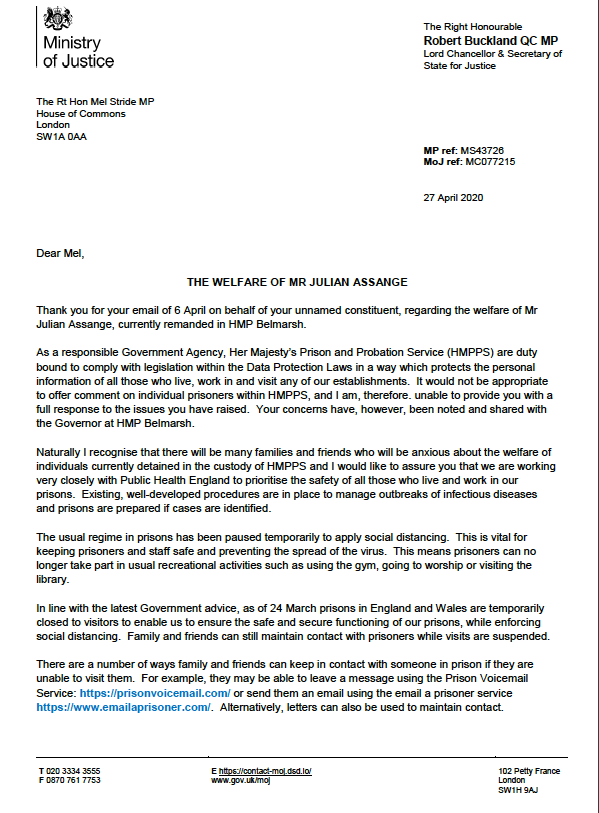
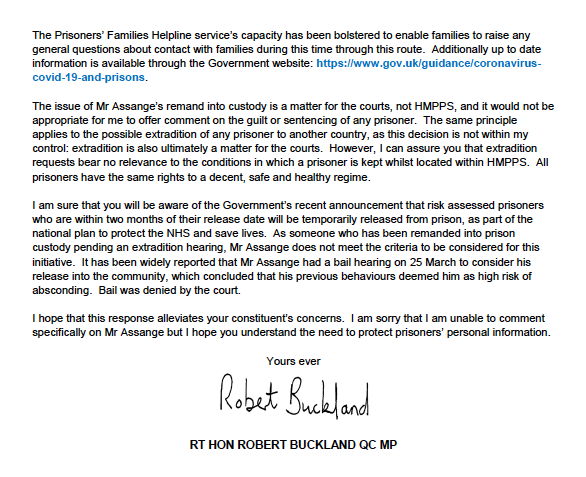




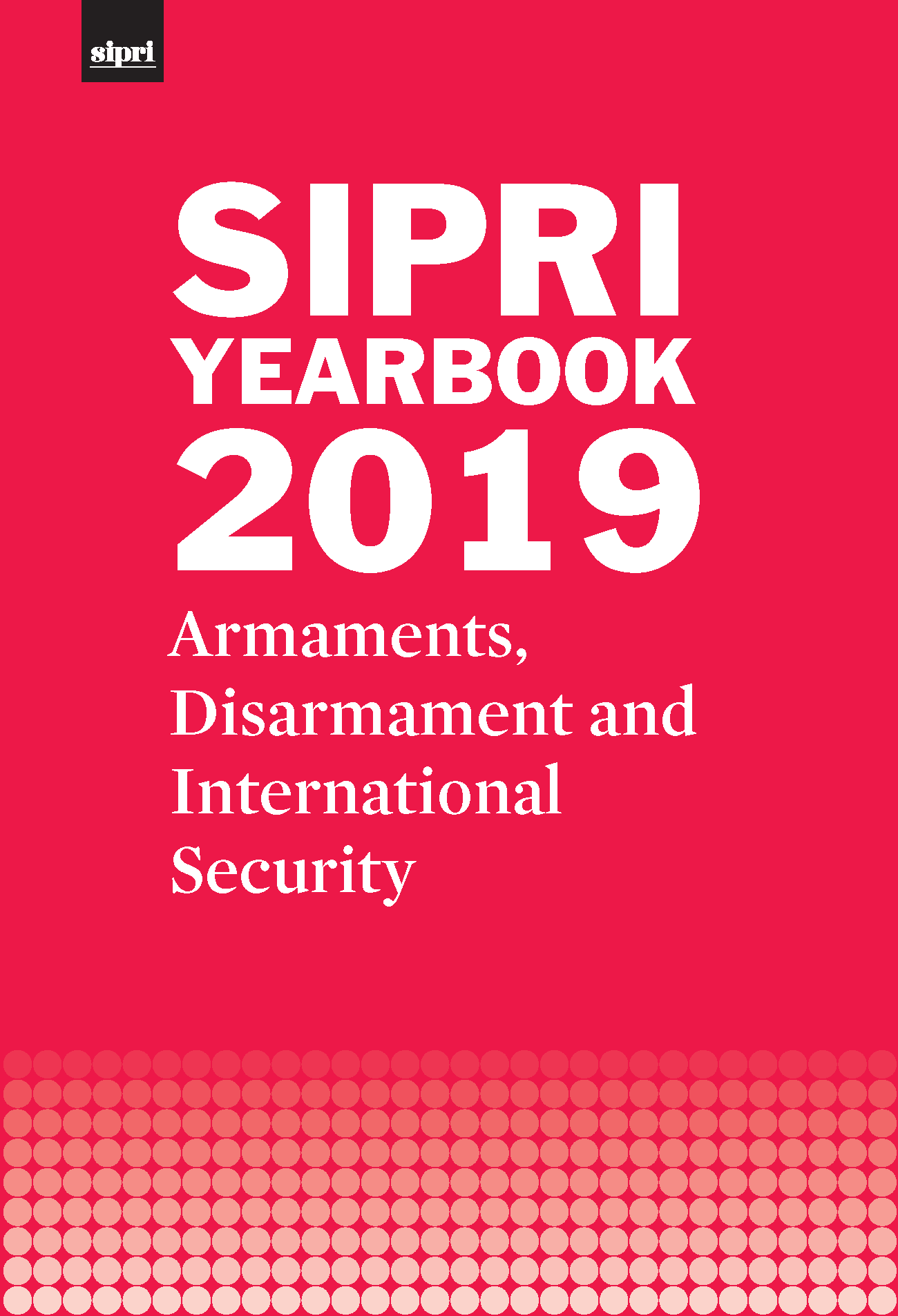
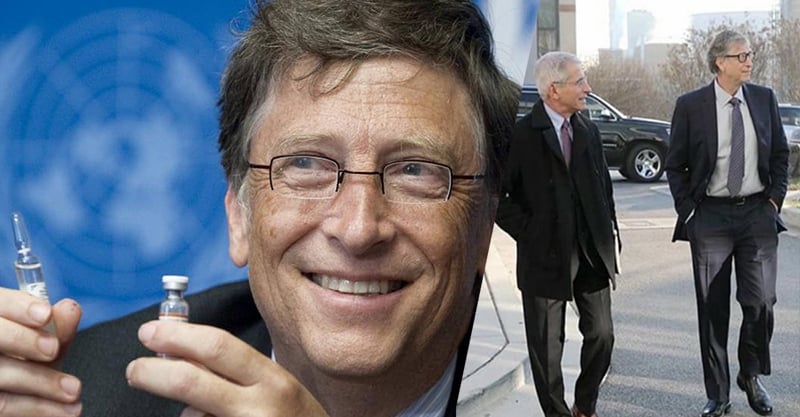


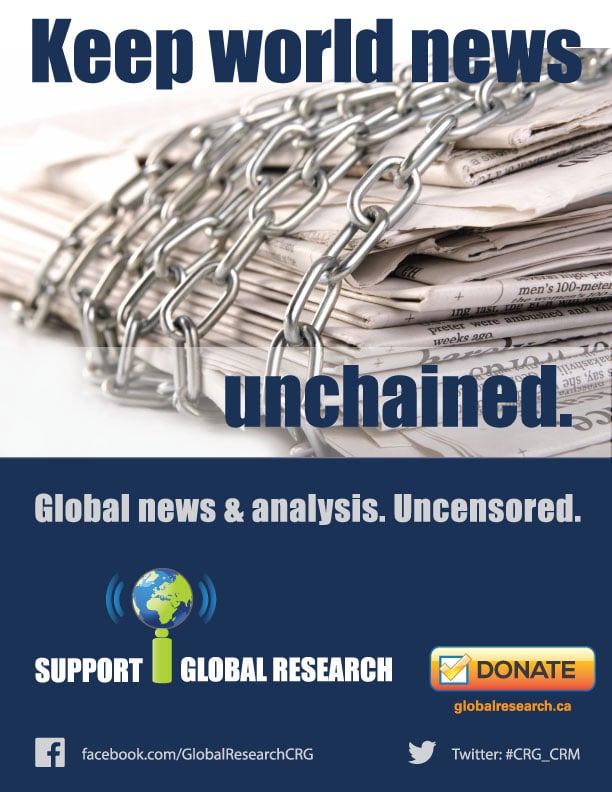 Can you
Can you 
